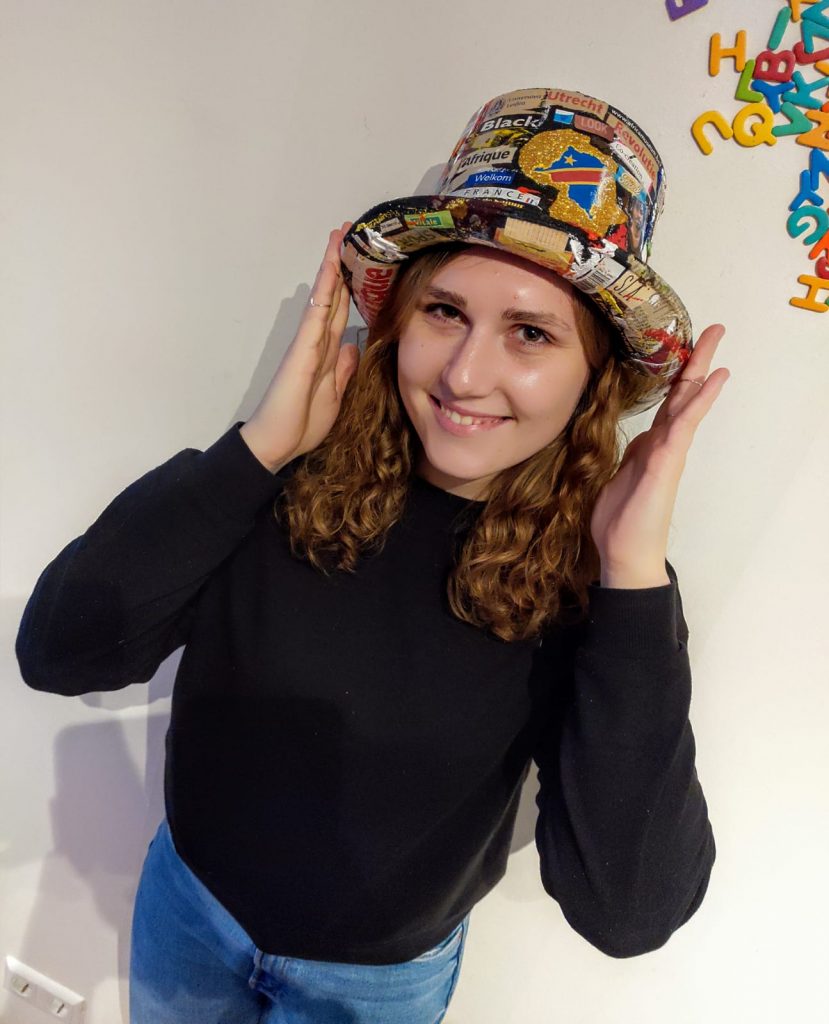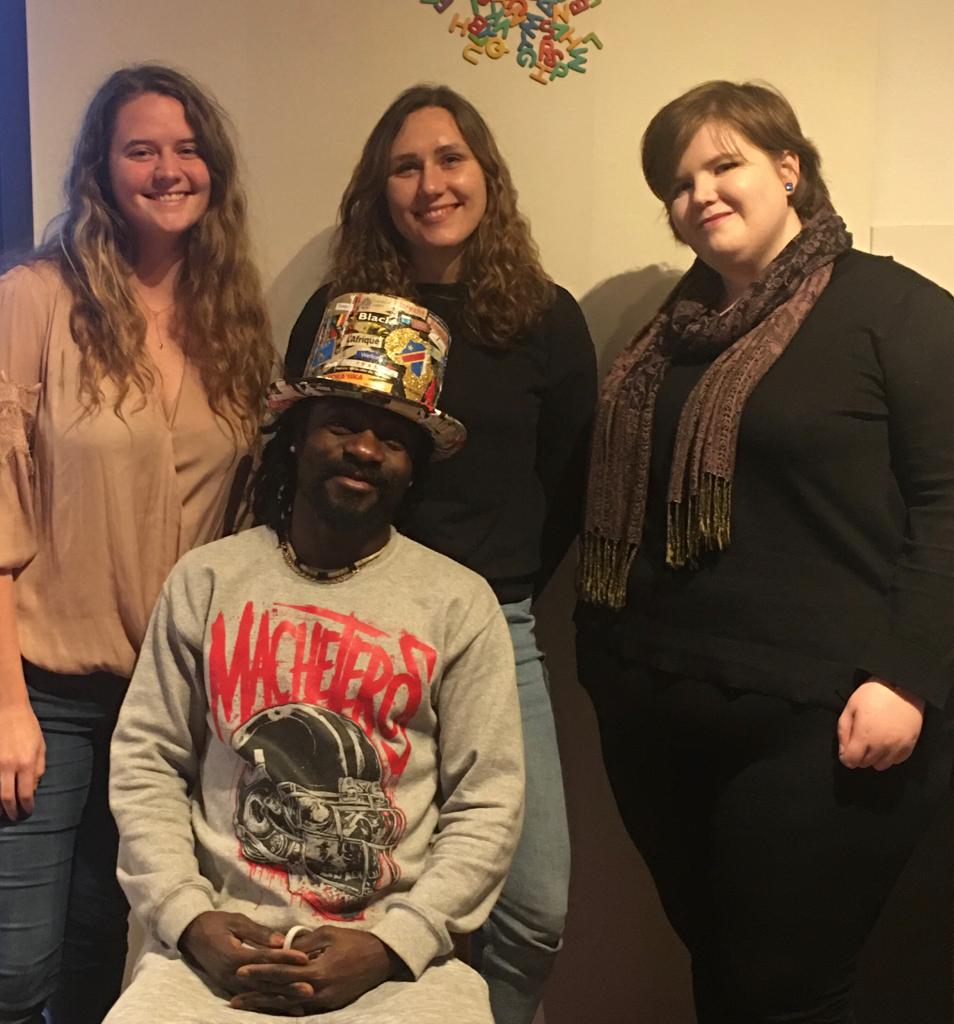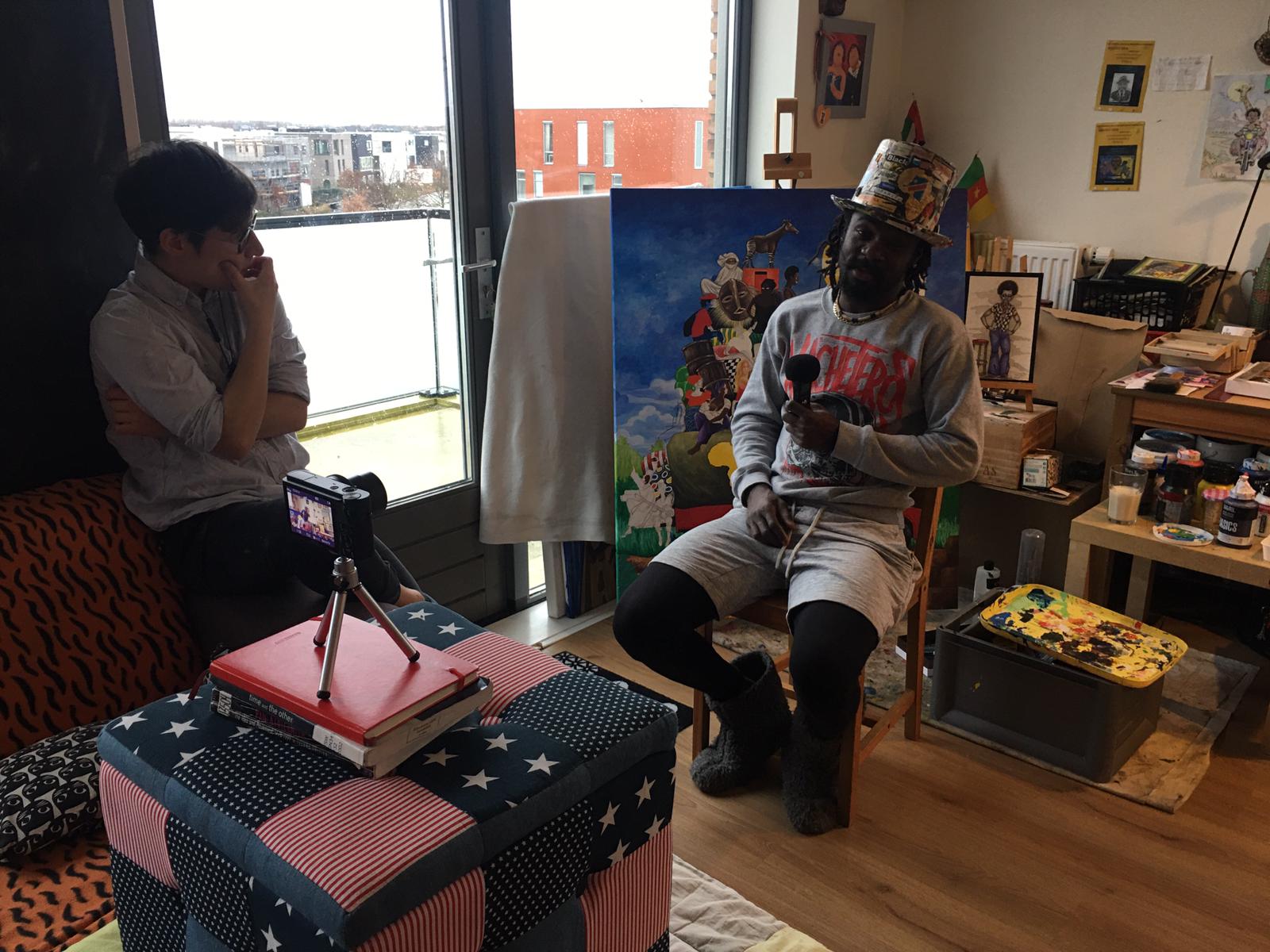In one of the first sessions of our seminar we discussed the Congo Crisis. Sapin was our guest and presented his drawing to us. Having read the literature for this week’s session, I had noticed that Ludo de Witte mentioned the Organisation of African Unity, representing “other African governments [who] looked on nervously, unhappy with the build-up of open foreign intervention in the Congo.” (De Witte, 2017: 114) Although de Witte described the OAU’s involvement in the crisis as “too little and too late”(Ibid.: 115), it caught my attention and my interest. After looking more closely at the painting I also realised that there was no sign of the OAU’s involvement in it either. Here, I could have moved on and find other, more represented aspects and actors in the crisis to give my attention to and do research on – but this blank spot in the painting somehow inspired me to look more into the role of the OAU, why exactly their involvement was too little and too late and why Sapin chose to not depict the organisation in is painting.
Quite early in my research, the initial premise got confirmed that the OAU’s involvement was simply insignificant, especially compared to other actors in the conflict. However, I widened my research focus on the OAU in general and asked myself why was their involvement insignificant and what exactly was their role? Who were the people behind the OAU and how could an organisation that was meant to unite the people of Africa end up being forgotten? Under which circumstances and by whom was the organisation formed? And how, if at all, is it remembered?
My initial idea was to include more voices from Africa to find out more about how the OAU and their role in the crisis is perceived by people in the Congo – voices of the people, not politicians, scholars and activists. But quite soon I realised this would not be possible because I don’t know anyone there, I wouldn’t know how to get in touch with people and, although the internet gives us great opportunities today, it is nevertheless like searching for the needle in the haystack when trying to use facebook or other online platforms to find out more about people’s opinion on a certain topic. The language was another issue since I don’t speak french and so I gave up on trying an approach that seemed to me less “old-school”. I initially wanted to move the attention away from the leaders and the “big men” in history. I was afraid to follow a pattern of writing about history that is only focused on leaders and institutions, but at the same time the idea of an organisation that represented African unity also struck me as an interesting case study. After I presented my project, the feedback I got was quite positive and I realised that the focus on the leaders is not a bad thing, as long as their history is not regarded the only important part of history.
The book “We will tell our own stories!”, edited amongst others by Molefi Kete Asante, and the course as a whole, inspired me to think of my own position and perspective in the field of African historiography and motivated me to include as many African writers as possible into my written project. I tried to focus on non-western scholars because it seemed to me important to mainly refer to African writers like P. Olisanwuche Esedebe and P. Mweti Munya, who wrote extensive contributions to Pan-Africanism and the OAU, which gave me a lot of material to work with. Research is always a matter of selection, so for me the focus on African scholars was an important criterion. Of course, there were western authors, like Nora McKeon or Alanna O’Malley, which I didn’t want to exclude but for as best as I could, I kept the call for “telling their own stories” in the back of my head.
Furthermore, I interviewed Sapin as a contemporary and expert about his own experience, his opinion and his feelings about the Organisation of African Unity. Since I also focused part of my research on the Pan-African origins of the OAU, I was curious about his opinion on the notion of Pan-Africanism. Finally, I could also get an answer to my question why Sapin did not include the OAU in his painting.
The process of writing the website posting and conducting the interview was inspiring in many ways. Firstly, the format of a video interview and the website posting instead of a final paper. In the course we had discussed podcasts as new forms of conveying history and making it more accessible outside academia. For me it was clear from the onset that if we got the opportunity for an interview I would want to include this in my project. Already the fact that our projects would not disappear in our professor’s drawer after putting hours of work into it, and rather would be published on a website, really made me excited about participating in this course. However, it also posed new challenges, because the audience we are writing for could be a different one. So far, I have only written academic papers and during my writing process I often forgot that this was not supposed to be a traditional paper but a website posting for a broader, also non-academic audience. Working on a video as a final project also posed new challenges, because I had to learn how to edit a video from scratch. Working in such a format made me realise how we should embrace the digital opportunities nowadays much more in our research and rethink ways to convey history. Secondly, the interview itself. The whole process was a great experience in many regards. Working with other students on such a project was an exciting new approach and we managed to overcome every challenge. Such as the fact that none of us was experienced in video making, or that there was no common language in which to communicate with Sapin and it turned out to be an interesting mix of Dutch, French, and English, or eventually the camera’s battery which only lasted halfway but the charging time gave us more time to have tea and non-interview related talks with Sapin. The dynamic and the atmosphere was great and Sapin seemed to be happy to have us around as share his expertise and knowledge, as well as everyday stories about himself, with us.
To my own project, the interview was on the one hand a great addition and provided me with a different perspective. On the other hand, for a moment it made me doubt my whole approach and my topic after it became obvious that Sapin didn’t depict the OAU simply for the fact that their role in the conflict, as in any other conflict in the Congo ever since, has been insignificant and he didn’t think much of the organisation at all. As he pointed out, he didn’t leave the OAU out of the painting on purpose but rather it didn’t even occur to him to include them in the painting because they simply didn’t have an impact. The more research I did on the topic myself, the more I understood this. However, after a moment of doubting whether my topic then was even relevant to understanding the Congo Crisis, I set my concerns aside and realised that for our course the OAU’s role in the Congo Crisis was still interesting. Less so because of their actual impact, but rather when looking at the blank spots in history, about the things that are left out and are forgotten. This thought helped me getting out of my moment of doubt and motivated me to go on with my project as I was even more curious how it happened that an organisation that was founded in such a spirit of independence and African unity, in a climate of enthusiasm and hope, could end up being forgotten.
Thinking of Michel-Rolph Trouillots “Silencing the Past” made me wonder in which moment this “silencing” of the OAU as a Pan-African institution has “enter[ed] the process of historical production” (Trouillot, 2015: 26). As an official institution, is was neither the “moment of fact creation (the making of sources)”, nor “the moment of fact assembly (the making of archives).” Its conferences, resolutions and sessions are well documented and still made accessible through its successor, the African Union. Rather, it is the “moment of fact retrieval (the making of narratives)”, as well as “the moment of retrospective significance (making of history in the final instance)”, where the memory of the OAU is lost. Its ineffectiveness in bringing peaceful solutions, political stability and economic progress to the continent led to the fact of simply being insignificant to the historical narrative of Africa. It is ironic, that Haile Selassie’s closing sentence of his speech at the founding conference of the OAU eventually came true. He said:
“A century hence, when future generations study the pages of history, seeking to follow and fathom the growth and development of the African continent, what will they find of this Conference? Will it be remembered as an occasion on which the leaders of a liberated Africa, acting boldly and with determination, bent events to their will and shaped the future destinies of the peoples? Will this meeting be memorialized for its solid achievements, for the intelligence and maturity which marked the decisions taken here? Or will it be recalled for its failures, for the inability of Africa’s leaders to transcend local prejudice and individual differences, for the disappointment and disillusionment which followed in its train.” (Haile Selassie, Speech at Addis Ababa Conference, 25th May 1963)
What he didn’t even consider was the possibility of the Organisation of African Unity being simply forgotten in the historical narrative, as had happened in the case of Sapin’s painting. It is therefore another aspect how history works; it is not always the powerful that control the historical narrative. In this case, the members of the OAU certainly would have wanted to be included in a painting of the crisis, simply for the fact that they tried to find a solution and did not see themselves as irrelevant. It was surely against the spirit of its prominent figures, like Haile Selassie, to be simply left out of the story at all. Because of their failure of effectively reconcile the conflict, however, their role doesn’t have any relevance for Sapin.
Some impressions from our visit at Sapin to conduct the interview:




